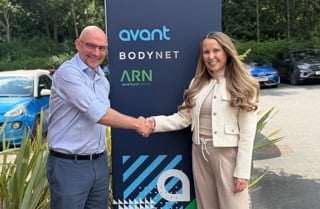Each week, around 100 at-work drivers are killed or seriously injured on the UK’s roads.
Apart from the human cost involved, companies are also left to pick up the resulting bill which is estimated at £2.7 billion per year.
However, while fleets are embracing driver training programmes which include risk assessments, they can still go one step further.
TRL, which was established as the Transport Research Laboratory in 1933 and now has world experts in their fields among its 450-strong workforce, is offering a new accident investigation course.
TRL first saw the value in launching the course when a utilities company contacted it to look into the reasons behind its road traffic accidents.
It was during an investigation that they both realised there was a gap in the fleet operator’s knowledge.
Accident investigation has always been seen as the domain of police and accident investigators.
But why not give the fleet industry the skills to investigate these incidents for itself?
“The investigation of incidents is an area where managers have tended to undertake investigations as best they can without specific training or waited for the outcome of police enquiries,” says Iwan Parry, head of investigations at TRL.
It’s an approach that has perhaps endured because of a lack of training options available to fleets, according to Parry, and one which he hopes to change through the launch of TRL’s accident investigation course.
“The course is aimed at health and safety, fleet, professional standards and operations managers, and others who deal with the questions that arise from on or off-site incidents involving company drivers.
"It’s appropriate for any business which seeks to learn preventative lessons and to identify effective actions following road traffic incidents involving its vehicles.”
TRL’s two-day course aims to develop the skills to interpret and analyse physical evidence in order to draw conclusions relating to the circumstances of an incident.
Specifically, it aims to allow managers to identify, capture and interpret potentially critical short-lived evidence from incidents; to provide an investigations methodology which leads to robust analysis and conclusions; and enable early investigation, decision-making and corrective actions.
It should also allow a clear understanding of the accident circumstances to be developed and communicated; provide companies with a source of information which is independent of other investigation agencies; and clarify the facts to inform the company’s legal position.
Neil Harrison, head of professional standards at South East Coast Ambulance Service NHS Trust, attended the inaugural TRL course.
“One of the main reasons for attending is to reduce the amount of accidents within the trust,” says Harrison.
“Through investigating accidents, we now have a means of implementing evidence-based systems and procedures to reduce these events in the future.
“It has provided useful information on how to collate evidence and structure an investigation report that would stand up to the scrutiny of legal proceedings.”
Parry says there has been an enthusiastic response to the development of the fledgling course.
They will be hosted at TRL’s head office in Berkshire or at locations convenient for trainees.
Why investigate?
- To learn precisely what happened and how
- Can feed into an accident database
- Allows benchmarking and potentially sector specific accident data
- To identify and implement corrective measures
- To satisfy legal requirements, including reporting under RIDDOR
- To discipline employees
- To prepare for potential legal action





















Login to comment
Comments
No comments have been made yet.